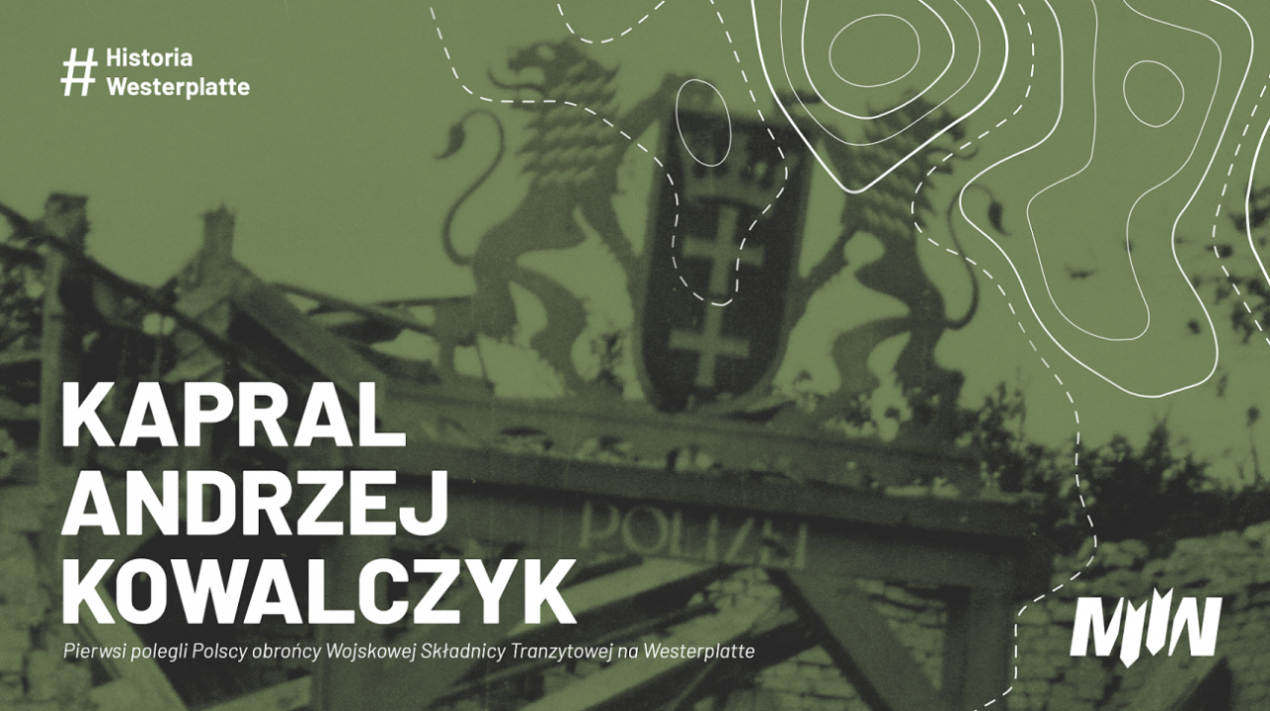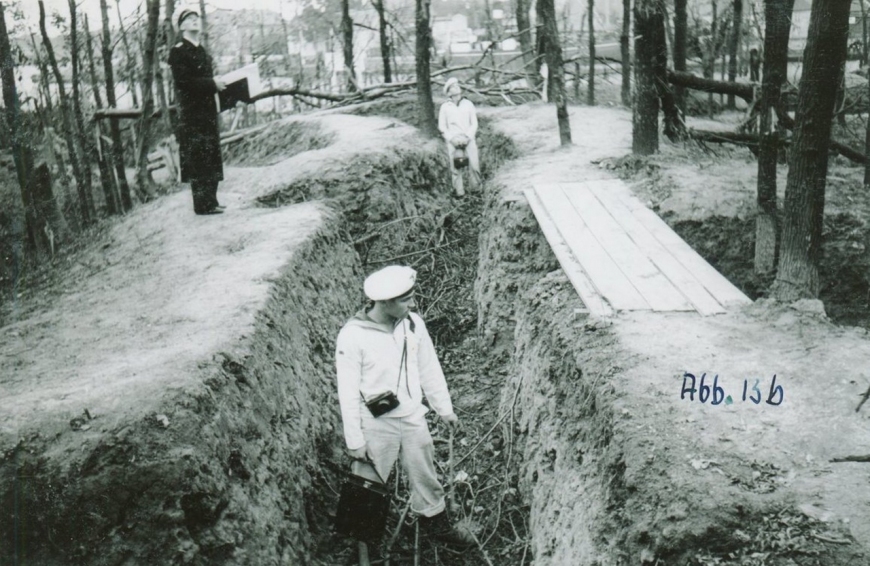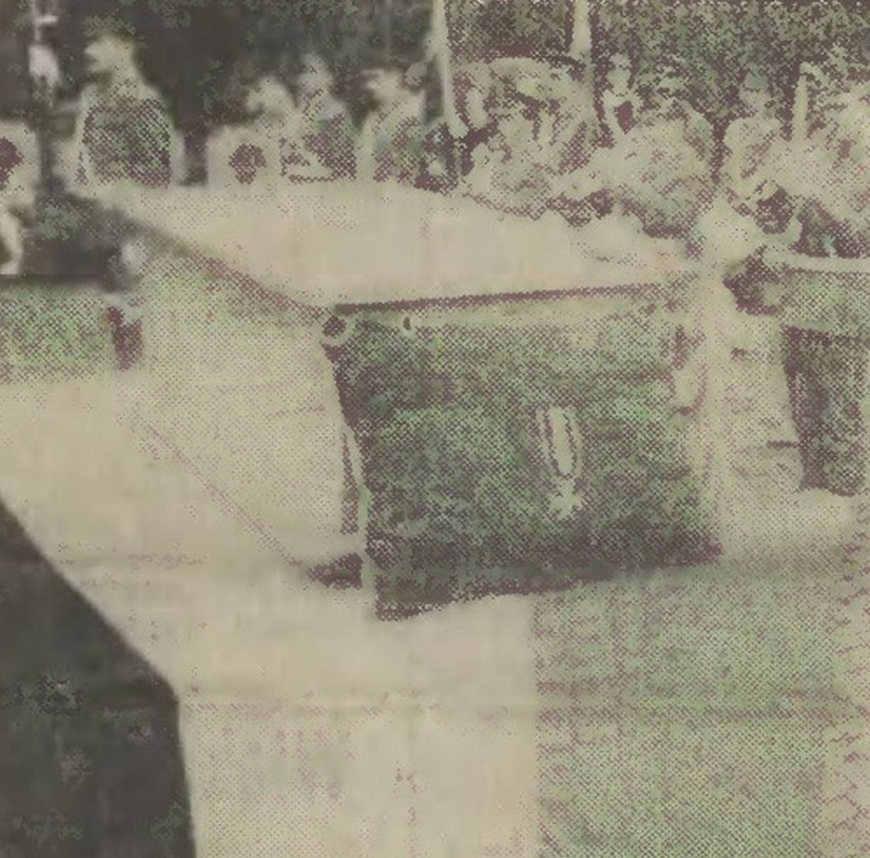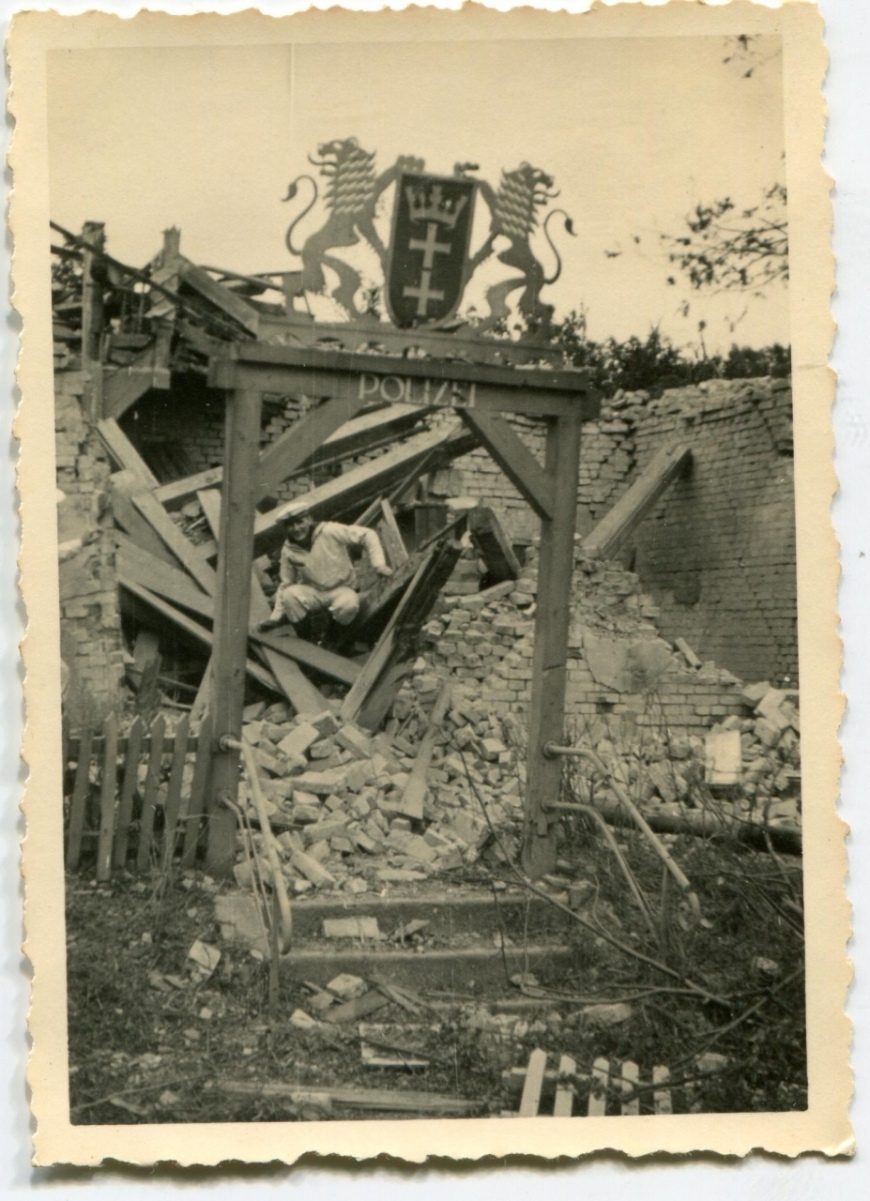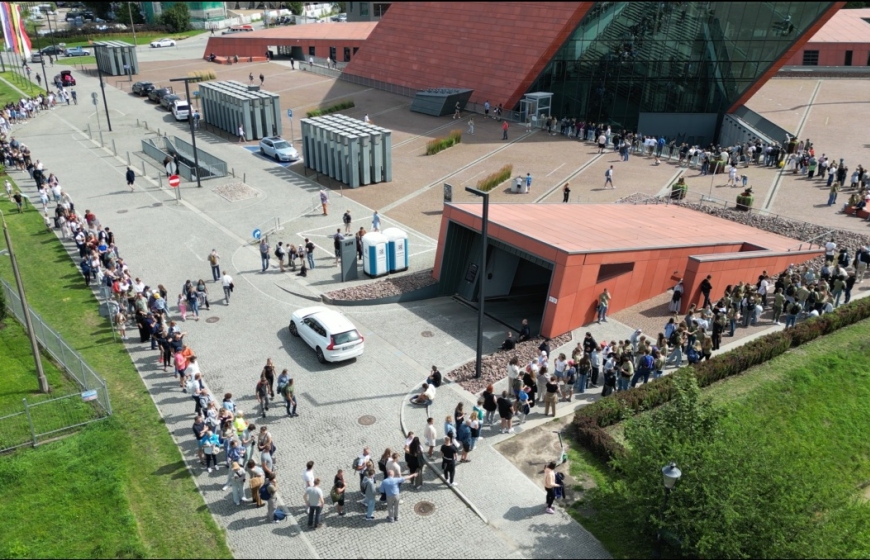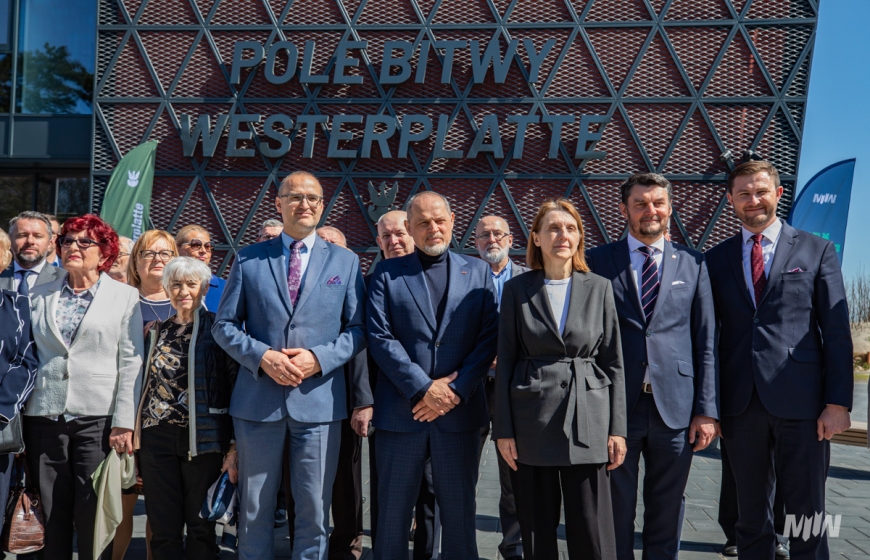#WesterplatteHistory - CORPORAL ANDRZEJ KOWALCZYK
Corporal Andrzej Kowalczyk
The first of the Polish defenders who fell at the Military Transit Depot on Westerplatte.
In this article, we will introduce you to one of the recent prominent figures in the public eye, a defender of Westerplatte. In light of the latest discoveries made during exhumation work initiated by the Museum of World War II in Gdańsk at the Cemetery of the Fallen Defenders of Westerplatte, we would like to present and shed light on the fate of Corporal Andrzej Kowalczyk, recognized as having fallen on September 1st, 1939, on the peninsula. Preliminary identification of the remains unearthed this year prompts a reexamination and verification of the information that has emerged concerning this Westerplatte defender. We invite you to read the details presented in the following article.
In July 1963, during construction work in the Westerplatte area, fragments of the remains of an unknown soldier were discovered in an undefined space southeast of guardhouse no. 1. As reported by contemporary researchers, the city authorities were informed of the situation, and they took a clear stance – personal belongings found with the fallen soldier were to be handed over to the Museum of the Polish Navy in Gdynia (MMW), and the remains were ordered to be "plowed under," without informing the public. The items intended for the identification of the fallen soldier included a harmonica, a whistle, and several rounds of ammunition. The most recognizable item, however, which did not end up in the collection transferred to the MMW, was a cigarette holder made from a bullet casing. This was made by Michał Blukis, associated with the Military Transit Depot on Westerplatte since its inception, for himself and Corporal Kowalczyk. Upon being immediately informed of the discovery in late July 1963, the Westerplatte residents prevented the remains from being discarded. They secured the bones of the presumed comrade in arms, placed them in a small box, and buried them at the Srebrzysko Cemetery in Gdańsk. Michał Gawlicki, also from Westerplatte, was supposed to be responsible for this task. Importantly, for years, the burial site remained unmarked, even after the alleged identification of the remains. This situation persisted at least until the early 1990s.
In the autumn of 1986, a researcher of Gdańsk cemeteries and a veteran of the September 1939 battles on the coast, Andrzej Chudy, reported the presumed burial site of Westerplatte remains at the Srebrzysko Cemetery – in the section for deceased children. In the same grave, other remains were found and described as those of an unknown person, discovered at the tram depot in Wrzeszcz. Field searches for this section yielded only indirect confirmation of the location of the actual grave since it was selected based on recognized and copied neighboring monuments symbolizing individuals buried there after 1963. In 1992, during nationwide ceremonies believed to involve Corporal Kowalczyk's remains, they were moved from the Srebrzysko Cemetery and solemnly reburied on Westerplatte. Since then, the peninsula has been believed to hold the remains of two Westerplatte defenders.
The exhumation of the presumed remains of Corporal Kowalczyk from the Westerplatte Cemetery on March 16th, 2021, concluded with a negative verification. This restarted the search for the burial place of the heroic defender. The remains turned out to belong to a German soldier, as indicated by the bones found along with German equipment in a coffin bearing Corporal Kowalczyk's name. As part of the investigation conducted by the Institute of National Remembrance (IPN) since 2019 concerning the fallen Polish defenders of Westerplatte, and due to the discovery of human remains unrelated to a Polish defender, a new search was initiated at the Srebrzysko Cemetery to confirm or deny the possibility of exhuming remains from the unmarked grave in 1992.
At present, we can consider three equally plausible scenarios:
1. Corporal Kowalczyk's body remains on Westerplatte and has not been found to date.
2. Corporal Kowalczyk's body, killed or seriously wounded, was taken by the Germans from the battlefield in 1939 and buried in an unknown location. Likely locations include the Zaspa Cemetery, the crematory cemetery in Gdańsk on Traugutta Street, or other currently unidentified sites.
3. Kowalczyk perished on Westerplatte in 1939, was found in 1963, buried at Srebrzysko, where additional remains were added around the same time in Wrzeszcz. After the 1992 exhumation, his remains still rest at Srebrzysko, as unidentified German soldier remains from 1945 were relocated to Westerplatte from elsewhere. This likely occurred due to hastily conducted search and exhumation work in 1992, along with the failure to retrieve remains from the original grave in 1963.
The information presented so far suggests that in the 1963 grave, the remains of two individuals found in different locations were placed in a single coffin. Additionally, the bones found on Westerplatte, along with equipment that was secured at the time, raise suspicions that they may also belong to a German soldier.
Certainly, the version that has been accepted so far – that Corporal Kowalczyk was found on Westerplatte in 1963, buried at Srebrzysko, and re-exhumed and reburied on Westerplatte since 1992 – is outdated due to the preliminary results of the body and equipment examination. However, it is essential to exercise caution regarding any further assumptions about any of the scenarios presented above until a thorough examination of Corporal Kowalczyk's equipment held at the MMW is conducted by authorized institutions. These examinations will ultimately verify one of the fundamental questions raised recently, namely whether Corporal Kowalczyk's remains were not found in 1963 and whether the equipment of a German soldier was misinterpreted and mistakenly attributed to the Polish defender of Westerplatte.
Certainly, the remains of Corporal Andrzej Kowalczyk should still be considered missing, and every effort should be made to locate his final resting place. The ongoing search at the Srebrzysko Cemetery will provide answers to the most critical research questions in this matter only after the identification process is completed by the relevant institutions.
Andrzej Kowalczyk was born on November 27th, 1914, in Kietlin (Radomsko commune, Łódź Voivodeship). He was the son of Antoni and Wiktoria (née Barankiewicz). He served in the 85th Infantry Regiment in Nowa Wilejka. On July 22nd, 1939, he was recorded as a corporal who arrived at the barracks of the 2nd Marine Riflemen Battalion in Gdynia-Redłowo from the 85th Infantry Regiment. His "specialty" was listed as "rifleman." On August 13th, 1939, he arrived on a naval tugboat at Westerplatte with a group of 25 soldiers from regiments stationed in the Wilno area. According to a new assignment on August 17th, 1939, he was assigned to the 1st squad of the 1st platoon, which was to man the eastern positions of the defensive system of the Military Transit Depot on Westerplatte. By order of the guardhouse commander on September 1st, 1939, he was listed as the leader of the readiness team. He likely participated in reinforcing the "Ferry" position at the beginning of that day's military operations. It was probably there that he was wounded. He died while Polish units were withdrawing towards guardhouse no. 1. The body of the missing soldier was discovered and identified in July 1963. His remains were buried at the Srebrzysko Cemetery in Gdańsk. In 1992, the remains believed to belong to Corporal Kowalczyk were solemnly moved and reburied on Westerplatte. Recent work related to the construction of the Military Cemetery of Polish Army Soldiers on Westerplatte suggests that the remains of a German soldier were moved from the Srebrzysko Cemetery to Westerplatte.
He was posthumously awarded the Cross of the Order Virtuti Militari, 5th Class, by order of the Chief Command of the Polish Armed Forces, no. 749, dated August 30th, 1945, for his defense of Westerplatte.












